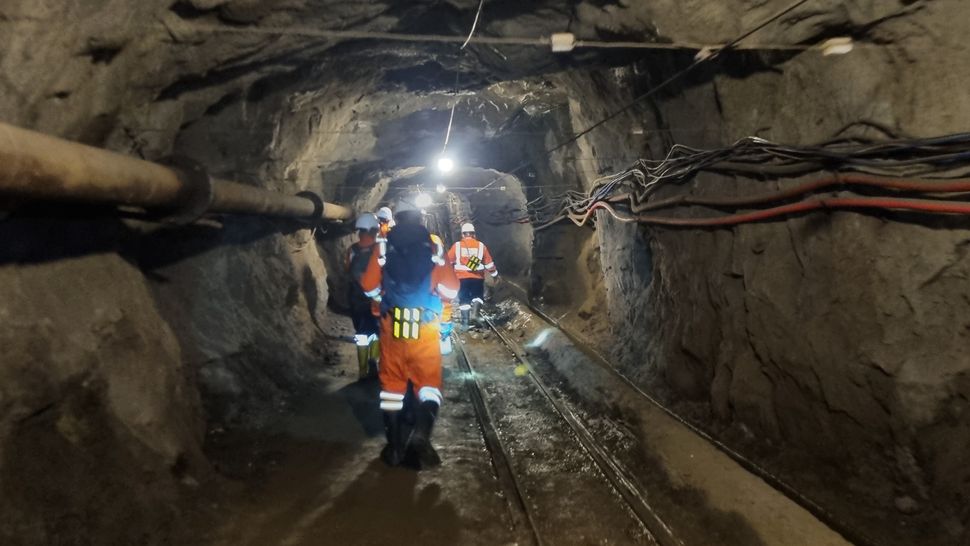Massive hydrogen reservoir discovered beneath an Albanian mine could be an untapped source of clean energy [View all]
By Sascha Pare published about 19 hours ago
A portion of ancient oceanic crust that sits atop Albania and hosts one of the largest chromium mines on Earth also contains a huge hydrogen reservoir, offering a potential source of clean energy.

Researchers walk down the tunnel of a chromium mine in Albania.
A team of scientists explore the Bulqizë mine galleries under the guidance of local miners. (Image credit: F-V. Donzé)
A massive hydrogen reservoir may be lurking deep beneath a chromium mine in Albania, a new study has found.
The reservoir sits within a portion of Earth's crust and mantle that once lay at the bottom of the ocean and was scraped off when the tectonic plate it rode on slid beneath another plate. The crumpled slab of crust and mantle was thrust onto land between 45 million and 15 million years ago and formed a 1,900-mile-long (3,000 kilometers) rocky belt, known as an ophiolite, that extends from present-day Turkey to Slovenia.
Ophiolites exist worldwide, and research has previously documented hydrogen gas leaking from boreholes and mines drilled into these formations. In the new study, scientists discovered the reservoir thanks to huge clouds of hydrogen gas wafting from pools of water inside the Bulqizë mine, which is located 25 miles (40 km) northeast of Tirana, Albania. Such hydrogen reservoirs could be tapped to provide carbon-free fuel, but the deep infrastructure needed to do so is lacking and the gas is inherently difficult to extract.
"We have seen plenty of hyper alkaline springs hosted in ophiolites worldwide where hydrogen is bubbling [out]," lead study author Laurent Truche, a professor of geochemistry at Grenoble Alpes University in France, told Live Science in an email. But "what we have observed deep in the mine is another dimension," Truche said, and "turns a draining pool inside a mine gallery into a breathtaking 30-square-meter [323 square feet] jacuzzi bubbling with almost pure hydrogen."
Truche and his colleagues explored the deepest levels of the Bulqizë chromium mine and recorded extreme quantities of hydrogen gas leaking from the rocks and bubbling through pools of water. Their measurements suggest that at least 220 tons (200 metric tons) of high-quality hydrogen escape from the mine every year, which is one of the largest natural hydrogen flow rates documented to date.
More:
https://www.livescience.com/planet-earth/energy/massive-hydrogen-reservoir-discovered-beneath-an-albanian-mine-could-be-an-untapped-source-of-clean-energy
